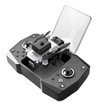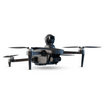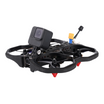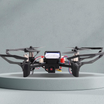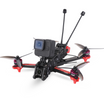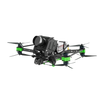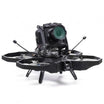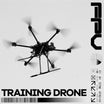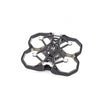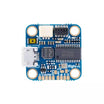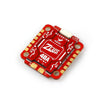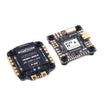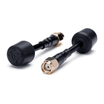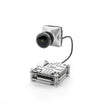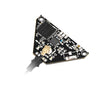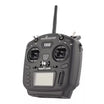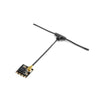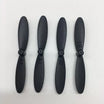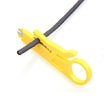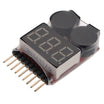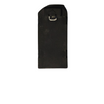Introduction
Drones, also known as unmanned aerial vehicles (UAVs), are aircraft that fly without an onboard human pilot. Over the past decade, drones have become extremely popular for both personal and commercial use due to their relatively low cost and array of capabilities. In this comprehensive guide, we will explore the world of drones, including how they are classified, their various applications across different industries, and the differences between key types of drones.
DGCA Classification of drones
India's Directorate General of Civil Aviation (DGCA) categorizes drones into five weight classes:
- Nano Drones: The nano category includes the smallest and lightest drones up to 250 grams. This encompasses mini toy drones, micro racers, and tiny camera models designed for indoor recreation. Nano drones pose minimal safety risks for people or property if anything goes wrong during flight. Rules are most relaxed for nano drones - no license or registration is required and they can be flown below normal height restrictions. Their diminutive size makes them easy to pack anywhere.
- Micro Drones: Ranging from 250 grams to 2 kilograms, micro drones include common beginner hobbyist quadcopters and entry-level photo/video drones equipped with basic cameras and stabilization features. While micro drone pilots don't need a full commercial license, they must register the unit and follow regulations like maintaining line of sight and respecting no-fly zones. These portable drones offer a great introduction before progressing to professional small camera drones.
- Small Drones: The small category covers heavier drones from 2 to 25 kilograms. These drones start to take on specialized commercial uses with adjustable cameras, customizable payloads, and advanced smart features. Common examples include filming drones for cinematography and inspection drones for surveying infrastructure, farms, and industry. Small drone pilots require proper training and licensing to operate legally while following airspace restrictions. The extra capabilities demand responsibility to handle these drones safely in more sensitive air zones.
- Medium Drones: Once drones surpass 25 kilograms, they reach the medium class up to 150 kilograms, operated mainly by experienced commercial teams. Medium drones take on heavy lifting workhorses for intensive photography, agricultural spraying, transportation purposes, and other challenging tasks requiring extensive range and endurance while hauling large payloads. Certified commercial drone permits are mandatory to meet strict safety standards before attempting complex medium drone operations.
- Large Drones: The largest class encompasses drones weighing over 150 kilograms. These units are less common but enable incredibly demanding drone capabilities for remote areas or assignments deemed too dangerous for manned crews. Few hobbyists will ever require massive drones that come at a premium cost and with critical flight challenges. But advanced aviation divisions utilize these machines to their immense potential.
As drones get heavier in those groups, there are more legal rules to follow. Pilots might need special licenses. Some airspaces put limits on the size of drones. Heavier models capable of spraying or lifting more cargo need more inspections to stay safe. Understanding the groups makes it easier for new fans to pick the right drone. Nano and micro drones make good starters before flying more complex small drones for work and fun.
Sector-Based Drone Applications:
In addition to weight classes, we can look at some of the most common drone applications across different industries:
- Agricultural Drones: Specialized agriculture drones like the Krishi Drone by insideFPV provide an aerial view of crops to monitor growth and irrigate and spray insecticides and pesticides over the crops. Beyond surveillance, larger agriculture drones can even monitor crop health, and growth and detect the infestation.
- Cinematography Drones: Lightweight folding drones like the Elevate are used in filmmaking to capture unique aerial footage at 4k HD camera quality giving a spectacular view at a fraction of the cost of a helicopter. The ability to equip cinematography cameras, gimbals, and filters makes drones an essential part of any videographer’s toolkit. These drones can be used for filmmaking and content creators
- Defense and Public Safety Drones: Some of the most common uses of drones for defense and security is surveillance and reconnaissance. Drones equipped with high-resolution cameras, infrared sensors, and other monitoring technology can gather valuable intelligence about areas or situations that may be too hazardous or difficult for human scouts. Military forces and law enforcement utilize drone surveillance to identify threats, track suspicious activity, and help strategize operations. Drones provide major advantages for dangerous counterterrorism attacks to neutralize targets while minimizing risks to personnel. Armed drones allow precision strikes against terrorist compounds, vehicles, or hostage situations that would be extremely high-risk for special forces troops on the ground.
- Entertainment/Racing Drones: Speedy drones like the BIR V2 let users experience the thrill of racing from a pilot’s perspective using real-time transmission of onboard camera views. BIR V2 with speed of 20-30 kmph is the perfect drone for racing due to its features like obstacle avoidance, which make the maneuverability of the drones easier and smoother. It is an apt drone for beginners and enthusiasts, as it promotes STEM education. FPV drones can also be used recreationally for freestyle stunt flying.
- Inspection Drones: Drones equipped with cameras, thermal sensors, and other scanning technology enable remote inspection saving considerable time and risk when examining infrastructure like power lines, cell towers, bridges, dams, mines, and confined spaces. Post-incident, investigator drones provide swift aerial scans of crime, crash, or disaster sites while causing minimal disturbance of evidence on the ground. Specialized drones may carry chemical sniffers, 3D scanners, or equipment to detect buried land mines and IEDs. Quick access to overhead photos and scans accelerates early analysis to aid investigators. Some drones even feature gripping claws or vacuums to carefully retrieve specific forensic evidence.
FPV vs Non-FPV Camera Drones
FPV, or first-person view, drones give you a pilot’s view during flight. They have built-in cameras that send live video right to the remote controller or to special FPV goggles you wear. This makes you feel like you’re sitting in the drone as it zooms through the air! FPV models are designed to be fast and extremely maneuverable. The tight feedback between camera and controller lets FPV pilots perform aerobatic stunts and swift moves. It’s also perfect for drone racing, allowing you to fly through obstacle-filled courses as if you were aboard the drone yourself. However, the video footage usually isn’t perfectly smooth or ideal for filming cinematic shots.
On the other hand, non-FPV drones prioritize capturing steady, high-quality photos and video footage with stabilization systems and attachable cameras controlled from the transmitter. While some non-FPV drones support FPV modes, they’re built more for creative filming and photography applications. The choice depends on your goals - immersive high-thrill FPV flight or smooth cinematic shooting. FPV performs best chasing racing lines and stunts. Non-FPV drone cameras produce stunning aerial panoramas and filming for projects. Advanced pilots sometimes operate FPV and non-FPV drones for both perspectives!
Conclusion
Drones come in many shapes and sizes to serve a variety of purposes. Small consumer drones with cameras are great for beginners to learn flying and capture scenic footage. Sturdier commercial drones take on heavy lifting like crop dusting and surveillance with their sophisticated features and systems. Racing enthusiasts fly nimble first-person view drones wearing goggles that give an immersive piloting experience. Laws divide drones into size and weight categories to regulate safely as their abilities grow more advanced. From fun weekend flying to professional inspections, drones continue opening more possibilities once limited by human reach and vision. The fast-growing capabilities make drones extremely valuable helpers across so many industries. With safety and responsibility, drones have unlimited potential to keep helping both hobby and work push new heights.
FAQs
- What are the main categories of drones classified by India's aviation authority?
India's DGCA divides drones into 5 weight classes - nano under 250g, micro from 250g-2kg, small 2-25kg, medium 25-150kg and large over 150kg. Each higher category faces stricter regulations on licensing, airspace restrictions and safety inspections proportional to their size, range and payload capacities.
- Which industries use specialized camera drones and for what purposes?
Spheres like media, entertainment, marketing, real estate, tourism and more use compact camera drones like the Elevate to capture stunning aerial footage and photos for projects. Higher-end models provide smooth, stable 4K video and extensive features to shoot cinematically. The accessibility empowers creative professionals with aerial perspectives that previously required costly equipment.
- How do inspection drones improve productivity and safety across sectors?
By providing swift, thorough aerial scans of infrastructure, facilities and sites, inspection drones save money and reduce risk for professionals. Specialized sensors identify flaws in bridges, track construction progress or assess disaster damage without needing to manually scale dangerous heights themselves. Drones deliver photos, 3D models and other actionable aerial intel faster.

